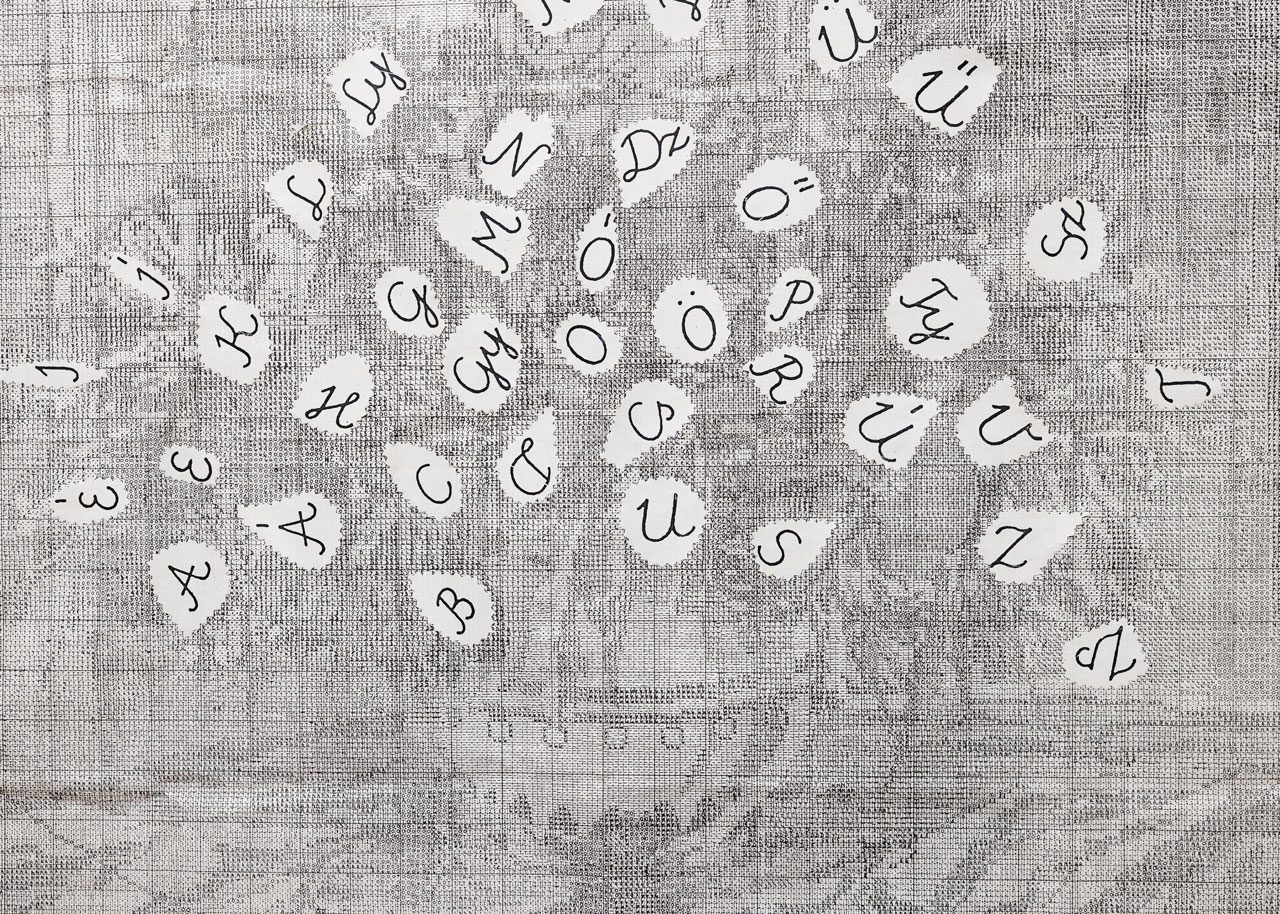PRESENTATION: Katalin Ladik, Ooooooooo-pus
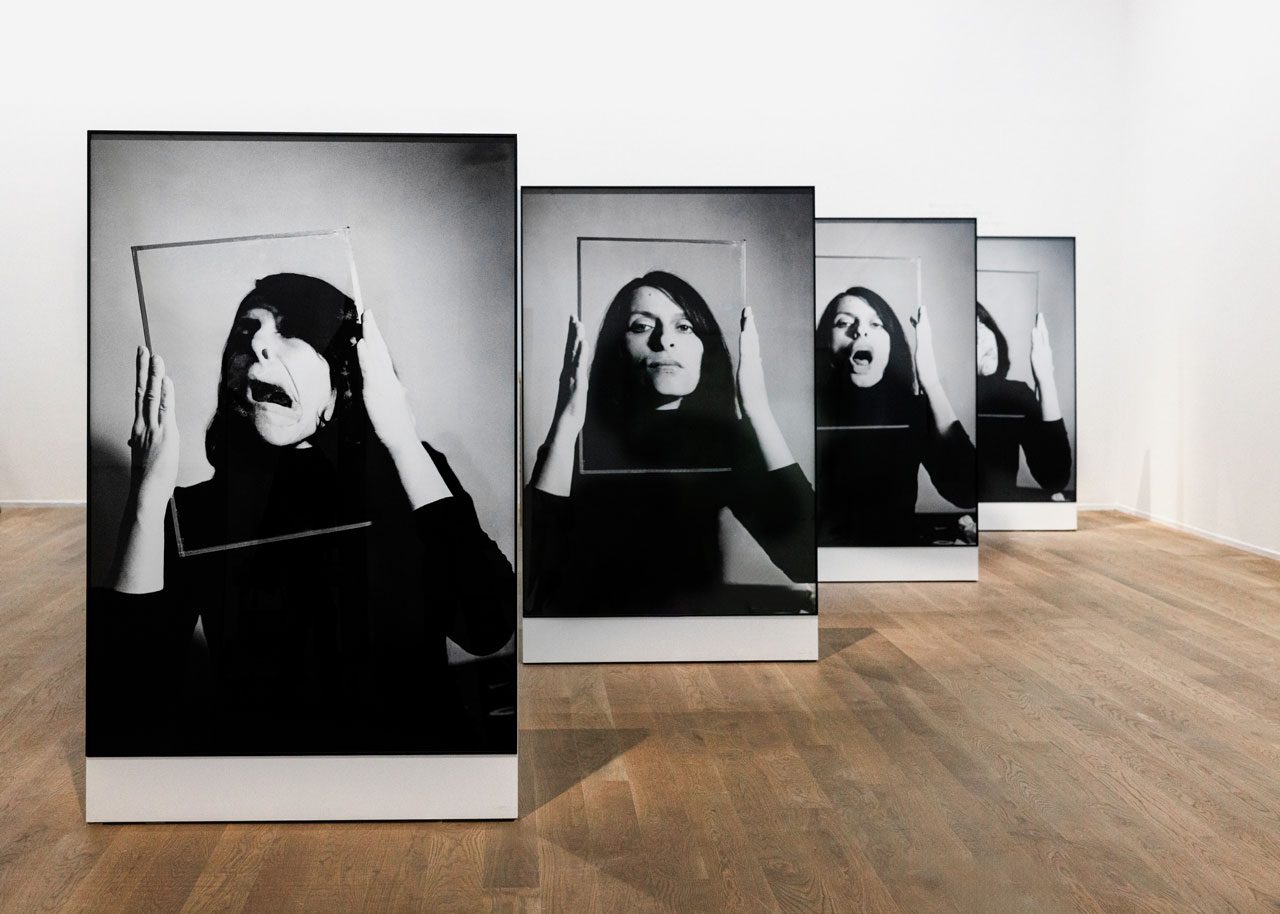 Katalin Ladik was born in 1942 in the city of Novi Sad, in former Yugoslavia (now Serbia) and currently lives in Budapest, Hungary. Her practice has been shaped by the multicultural and multilingual context of Novi Sad, where the majority of the population is Serbian or Hungarian. She began her career as a poet and was one of the few women in the city’s artistic and literary avant-garde.
Katalin Ladik was born in 1942 in the city of Novi Sad, in former Yugoslavia (now Serbia) and currently lives in Budapest, Hungary. Her practice has been shaped by the multicultural and multilingual context of Novi Sad, where the majority of the population is Serbian or Hungarian. She began her career as a poet and was one of the few women in the city’s artistic and literary avant-garde.
By Dimitris Lempesis
Photo: Moderna Museet Archive
Ladik established herself over the course of the 1960s and 1970s as one of the few female protagonists of the artistic avant-garde in former Yugoslavia. The multilingual and multiethnic context of her birthplace, Novi Sad (now Serbia), shapes her approach to language and poetry to this day. Her interest in the dissolution of language into individual phonemes and the sound resulting from that constitute the connecting element binding together the artist’s multifaceted collages, textile works, photographs, performances, and objects by means of the extraordinary range of her voice. “Ooooooooo-pus” is the first survey exhibition of Katalin Ladik (in Europe. Drawing on the artist’s lifelong interest in language, sound, and corporeality, the exhibition provides a first comprehensive overview of her works from the late 1960s to the present. With her radical approach to (sound) poetry and performance, Each of the three galleries in the exhibition has its own soundscape – a soundtrack – from the artist’s sound poetry. The first part of the exhibition “Visual Poems” presents Katalin Ladik’s work on language, through her “visual poems”. She creates collages using a variety of found materials, from sewing patterns and sheet music to found object, such as circuit cards from radios and kitchen appliances. With her extraordinary vocal range, she then interprets the collages like a music score. The second part of the exhibition “Folklore and mythology” highlights Katalin Ladik’s religious, folkloric and mythological themes. She often makes use of well-known female characters in mythology, for instance in the installation “Follow me into Mythology” (2017), which consists of a sixty-metres-long embroidered textile ribbon that invites us to follow the red thread of Cretan princess Ariadne. Katalin Ladik’s visual poems are also the key to her performance art, which is presented in the third and final part of the exhibition entitled “Challenging established traditions”. A clear feminist position emerges here: ever since the early 1970s, she has challenged established traditions and gender roles by embodying their contradictions. She appears both male and female or androgynous, covered and exposed, inviting and repelling, playful and severe. In the three photographs “Androgin” (1978), Ladik seeks androgyny, an ambiguous space between the binary of female and male. She reflects and doubles herself, and thus becomes plural – her mouth a source of infinite utterances of languages yet unknown. The series of eleven scores titled “Genesis” (1975/2016) projects a similar ambiguity. They are photographs of circuit boards found in radios and household appliances. Ladik does not only transform these mundane objects into scores for experimental sound poetry, audible in the accompanying soundtrack, but she also considers how materials such as silica are simultaneously ancient (sand) and futuristic (silicon semiconductors). Projecting stories backward and forward in time, everything around us is always mythological, according to the artist. There are two parallel threads on the red textile work “Follow Me Into Mythology” ( 2017 ). The dashed white line alludes to the trail made with the thread of Ariadne, the ancient Greek princess who helped her mortal lover Theseus to retrace his steps and escape Daidalos’ labyrinth. The solid gold line embodies the spiritual essence of the mythological tale – of love, passion, and, ultimately, betrayal. In the 1980s, Katalin Ladik started to experiment with photo-performance: performances without an audience that are staged only for the lens of a camera. In these works, she found yet another way to write in a different medium. For instance, in the series “Poemim” (1976/2016), Ladik distorts her face using a windowpane. She creates a poem of the grotesque, as the glass plate frames and exposes the torturous transformations of her face. At the same time, the glass shields her from the viewer’s reaction, indeed an apt response to the sexist reception of her performance work from the 1970s, with Hungarian critics disparagingly calling her “the naked poetess”. In the other works, Ladik similarly uses her body to liberate it from the stigmas of beauty, desire, and, ultimately, sexual objectification. The improvised photo-performance “Pseudo-presence” ( 1972 ) took place during a rehearsal with the Croatian avant-garde music ensemble Acezantez, with which she was to perform at the 1972 Olympic Games in Munich. She asked the bandmembers to pretend she wasn’t there, thus rendering her invisible. However, her naked body stands out in the group of fully clothed people, making her simultaneously hyper-visible. Katalin Ladik is there and not-there, her body the vehicle to write a story that was, in 1972, yet unwritten. The first edition of “Stories of the Seven-Headed Sewing Machine” (1978) featured six drawings reminiscent of comic book illustrations. It was published by Új Symposion and translated to English in 1992. Until today, Ladik has published fifteen volumes of poetry in Hungarian, eleven of which have been translated into various languages. Between 1963 and 1977, Ladik worked at Radio Novi Sad, where she collaborated with composer Ernő Király and met Vladan Radovanović, who, together with Paul Pignon, would go on to found Radio Belgrade’s Electronic Studio in 1972. Its current archives still hold some rare recordings of Ladik’s early sonic performances.
Katalin Ladik started performing her poems in the late 1960s. At the time, performance was an emerging field and not necessarily recognised as an art practice. Ladik developed a unique and process-based approach to poetry. With a ritualistic demeanor, she summoned the words from the pages, conjuring powerful images with her undeniable presence and voice. Ladik considers reciting a poem a ritual. Her performance “R-O-M-E-T” (1972) exemplifies the presence of the body, language, and ritual, recounting a rite of passage. In the performance, Ladik was wearing a golden dress and sandals, reciting names of pharaohs and spells from the Book of the Dead (a collection of ancient Egyptian funerary texts). In breaking language down to spells and even just phonemes (as hieroglyphs do), she accentuated the instinctual and mystical qualities of language. Ladik as the poetess-cum-priestess was followed by fellow artist Janez Kocijančič, who lay down on the floor. Lit by a candle whose wax droplets we can still see on one of the sheets of the script, Ladik embalmed and mummified his body while singing. Her sonic poetry, in particular the performative elements, designated the end of the strictly ”poetic” form, while radically extending its expressive power. Katalin Ladik’s sound performance “UFO Party” (1969‒1970) probes her position in society and alliance with other objects of “unknown origin”. She later recounts: “Back then I was considered this weird creature back home in Yugoslavia. […] My strangeness, if you could put it that way, was somehow of ‘unknown origin’ inside Yugoslavia, because, you know, I was Hungarian, and a woman, a multiple deficit, marginal … and then I thought, UFO means exactly this!” The title also refers to “UFO Happening” (1968, fig. 3), in which artist Tamás Szentjóby (aka St. Auby), Miklós Erdély, and Ladik herself orchestrated their first meeting in Szentendre, near Budapest. The happening was timed to coincide with the May 1st parade of 1968 and constituted Ladik’s first appearance in the Budapest art scene. As her narration recounts (fig. 4), her participation in the happening not only set in motion the divorce from her first husband, but also sparked a new interest in event scores. Pouring her body into her poetry and poetry out of her body was perceived as an offence by her critics in Yugoslavia. In the aftermath of her performance “Shaman Poem” , Katalin Ladik was accosted with the misogynist slur of “the naked poetess” and condemned by the ruling Communist Party on the basis of immorality. Moreover, the predominantly male art community was quick to dismiss and ridicule it. Misinterpreted as a striptease, their reading of the act speaks volumes about the sexist social reality Ladik was living and performing in. In her performance “Blackshave Poem” (1978) Ladik staged a kind of “anti-striptease” that sought to reclaim the woman’s body from the male fantasy. In the performance, Ladik undressed to reveal the white lace lingerie she wore over her black attire. She then applied shaving cream on top of the garment to “shave” her armpits and face, assuming an androgynous, ungendered body. Although “Blackshave Poem” was, indeed, a razor-sharp response to the misogynist scandalisation of Ladik’s previous performances, the work has become iconic thanks to Ladik’s playful and decidedly grotesque subversion of the male gaze. “Identification” was a photo-performance by Katalin Ladik at the Academy of Visual Arts in Vienna. The performance was part of an exhibition of Yugoslavian art where she presented work with the Bosch+Bosch collective. A monumental Yugoslavian flag was placed in front of the façade of the building, thus signifying a political sphere outside the socialist bloc. Ladik implicated her body in the space of the flag ‒ the ultimate symbol of national ideology ‒ by posing in front and behind it. Measuring her body against the monumental scale of the architecture and the flag, which in the second photograph (on view when you exit the exhibition) covers the artist’s face, articulates the precarious balance between individual and ideological expression within politically charged territories. The political purges and reinforcement of moral values by the Yugoslavian regime, which retroactively charged Katalin Ladik with accusations of indecency and subversion in 1977, “provoked these screams in me,” Ladik has said. “Screaming Hole” (1979) was first presented at the Tribina Mladih in Novi Sad. Standing in a wooden structure covered with posters and surrounded by objects associated with feminine labor.
Photo: Katalin Ladik, Poemim, 1978/2016 Photo-performance. © Katalin Ladik. Photo: My Matson/Moderna Museet
Info: Curator: Hendrik Folkerts, Moderna Museet, Skeppsholmen, Stockholm, Sweeden, Duration: 9/11/2024-20/4/2025, Days & Hours: Tue & Fri 10:00-20:00, Wed-Thu & Sat-Sun 10:00-18:00, www.modernamuseet.se/
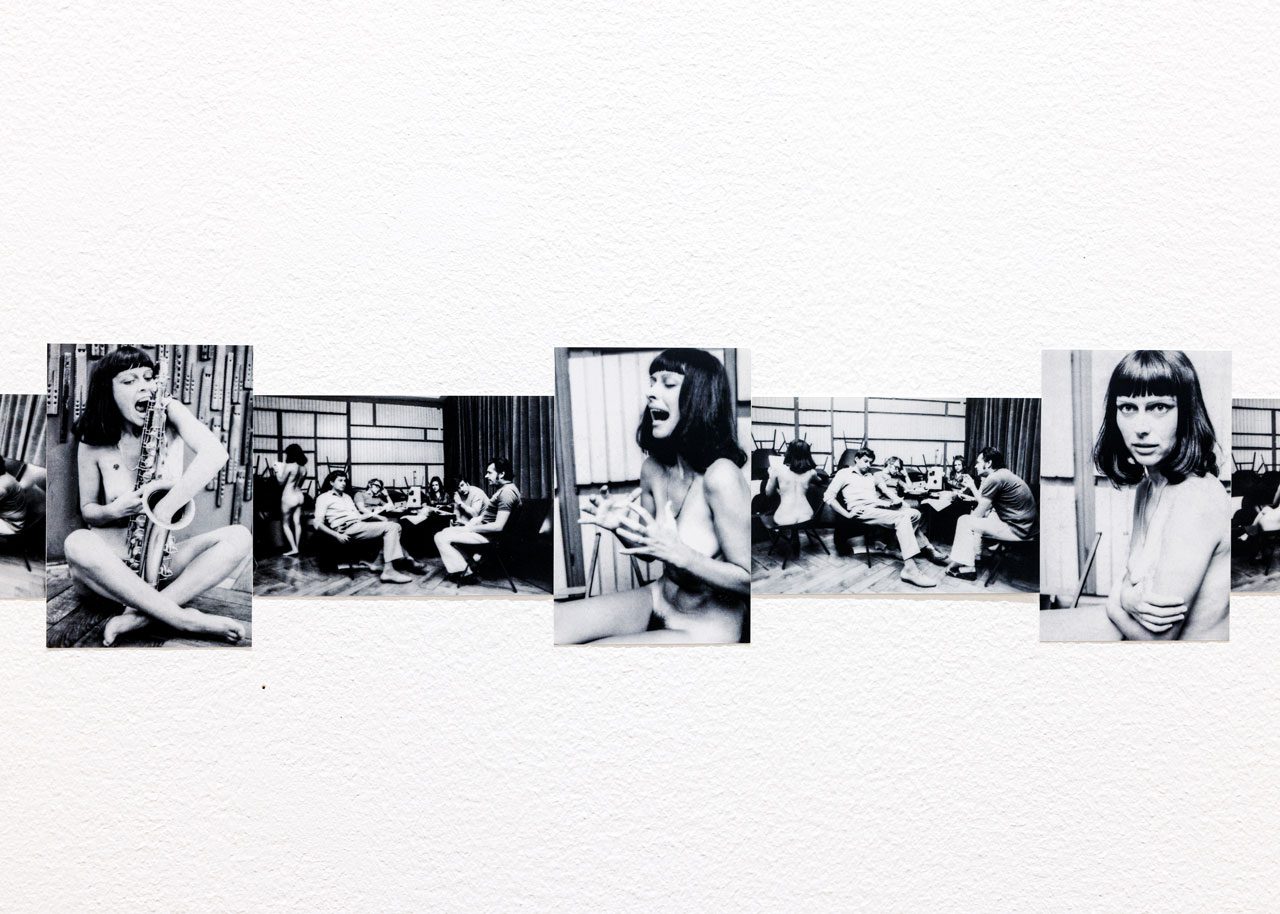
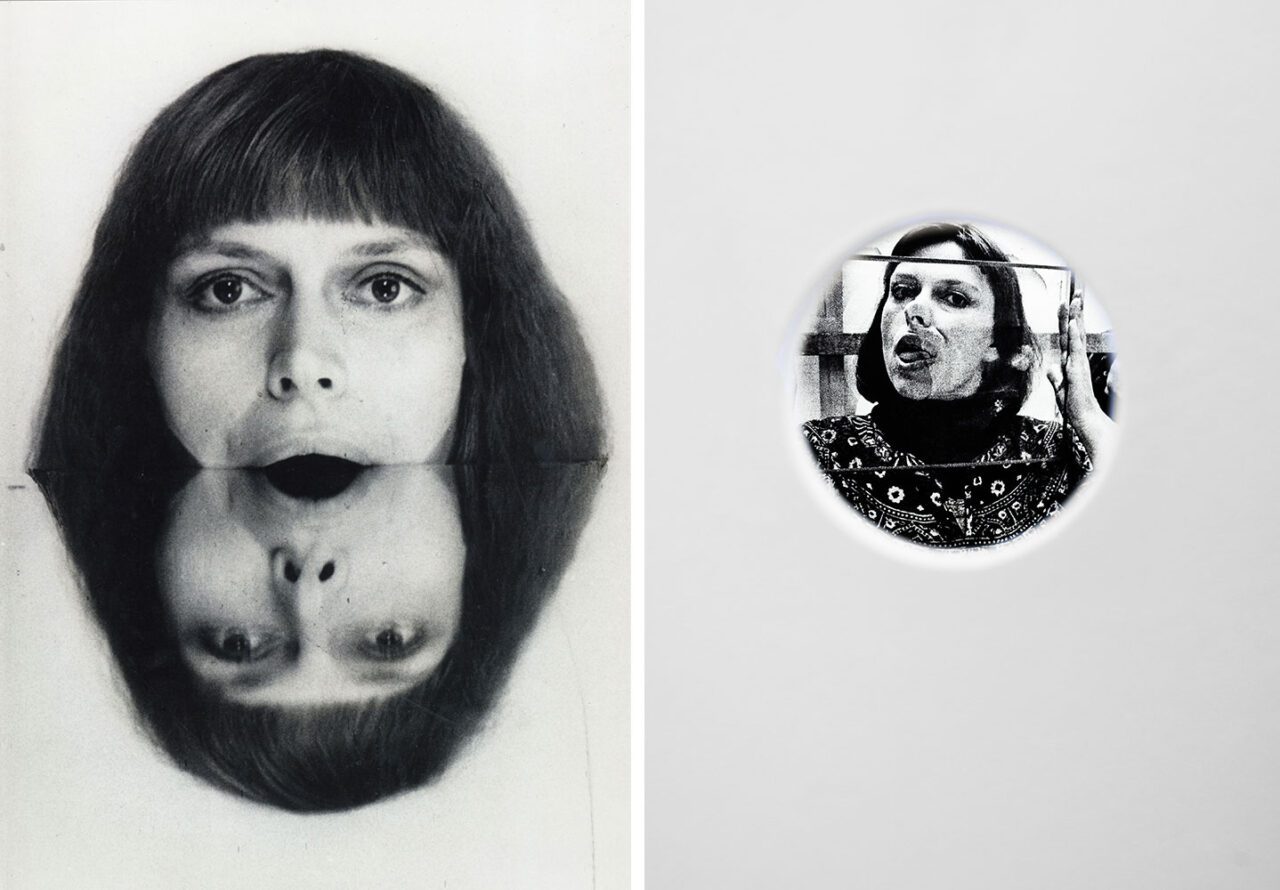
Right: Katalin Ladik, Screaming Hole, 1979 © Katalin Ladik. Photo: My Matson/Moderna Museet
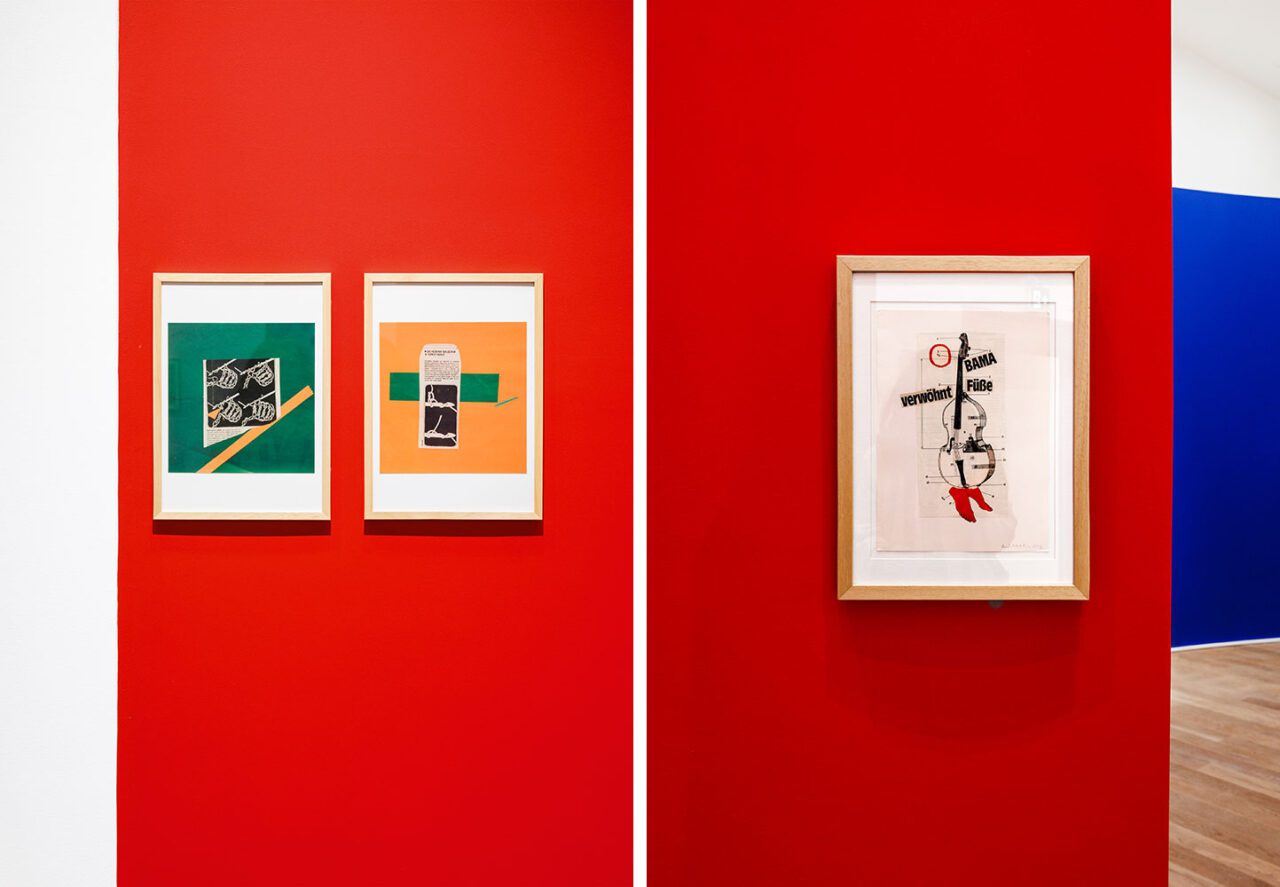
Right: Katalin Ladik, March of the Partizan Woman, 1979 © Katalin Ladik. Photo: My Matson/Moderna Museet
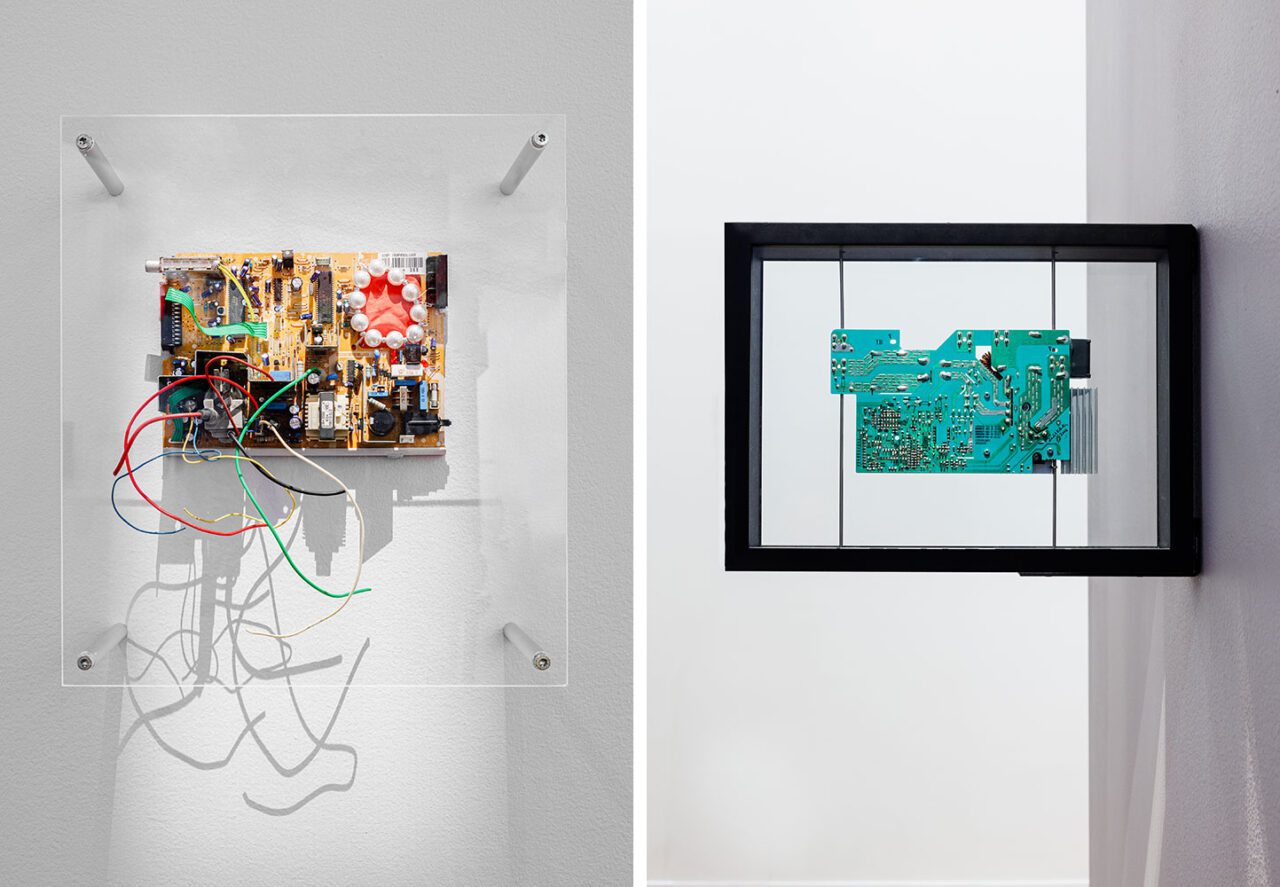
Right: Katalin Ladik, Induction Cooker Aria, 2017 © Katalin Ladik. Photo: My Matson/Moderna Museet
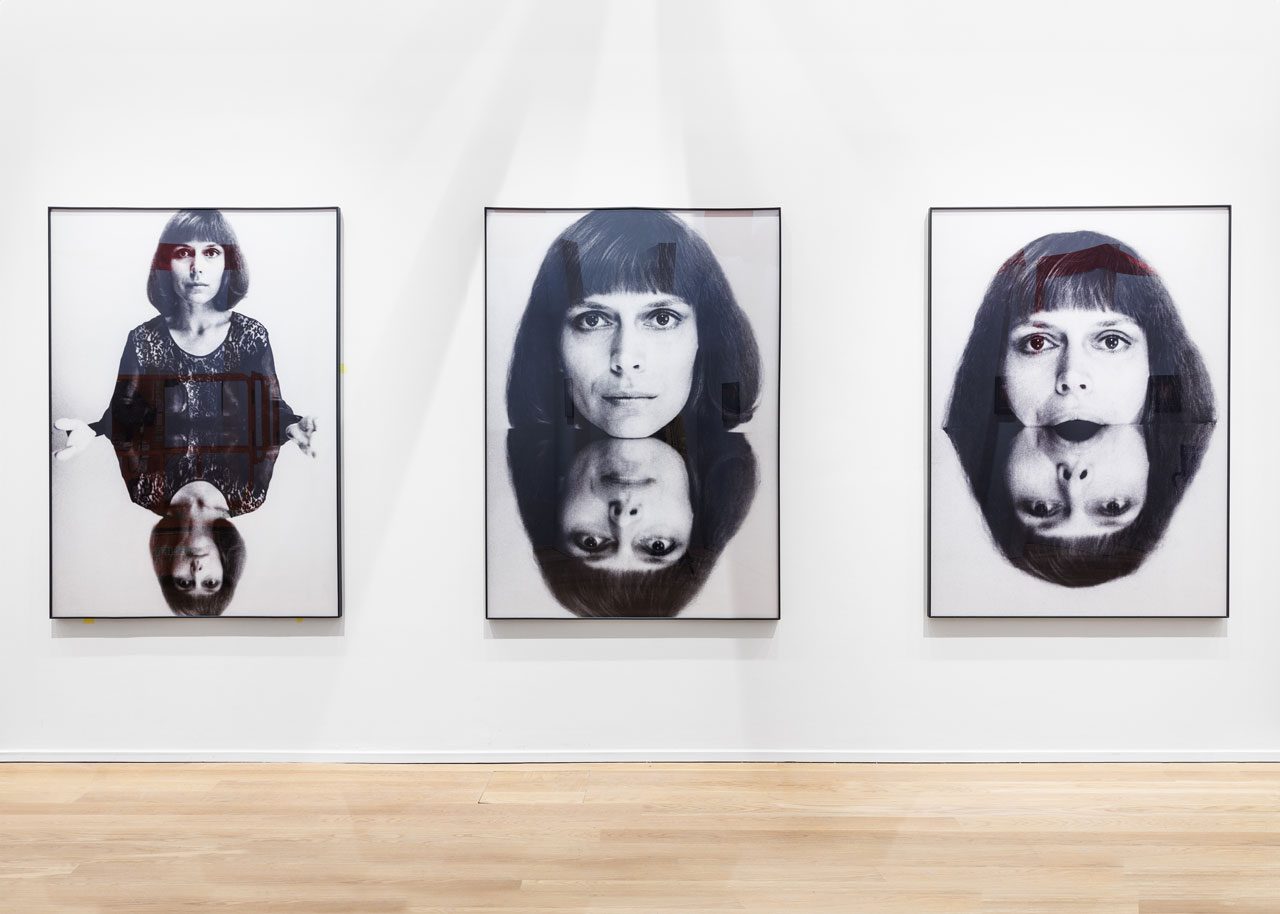
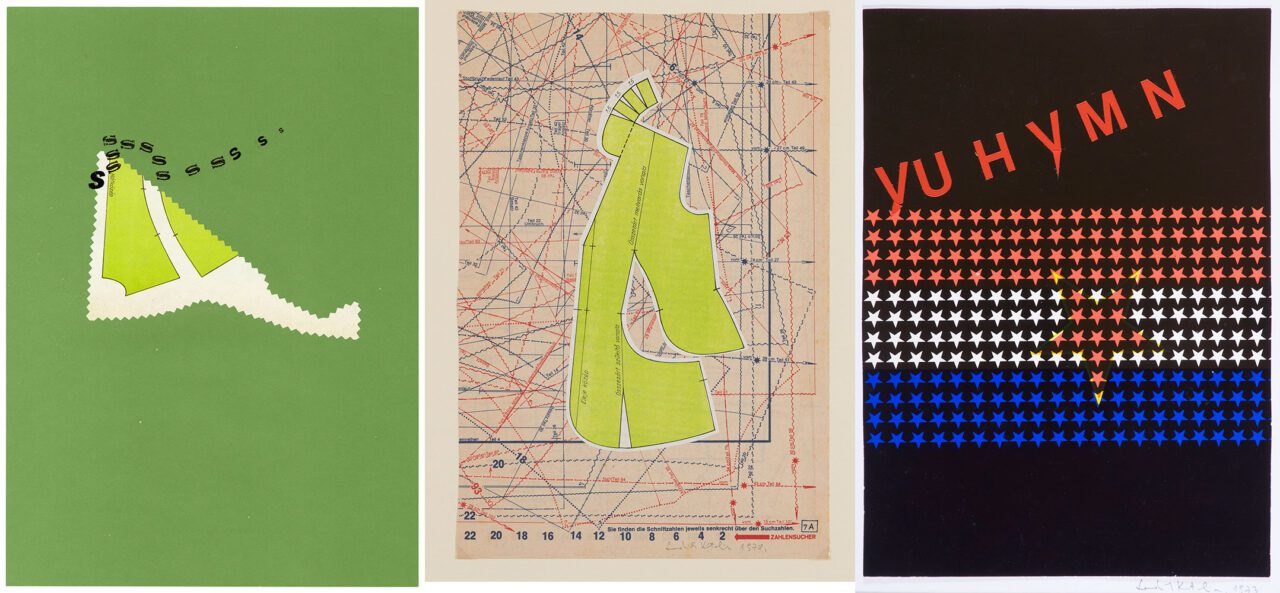
Center: Katalin Ladik, Desire, 1978 Collage on paper, 30 x 20.5 cm. Photo courtesy Katalin Ladik and acb gallery, Budapest © Katalin Ladik
Right: Katalin Ladik, Yu Hymn, 1973 Collage on paper, 28 x 20 cm. Collection of Ludwig Museum, MoCA, Budapest. Photo: József Rosta/Ludwig Museum © Katalin Ladik
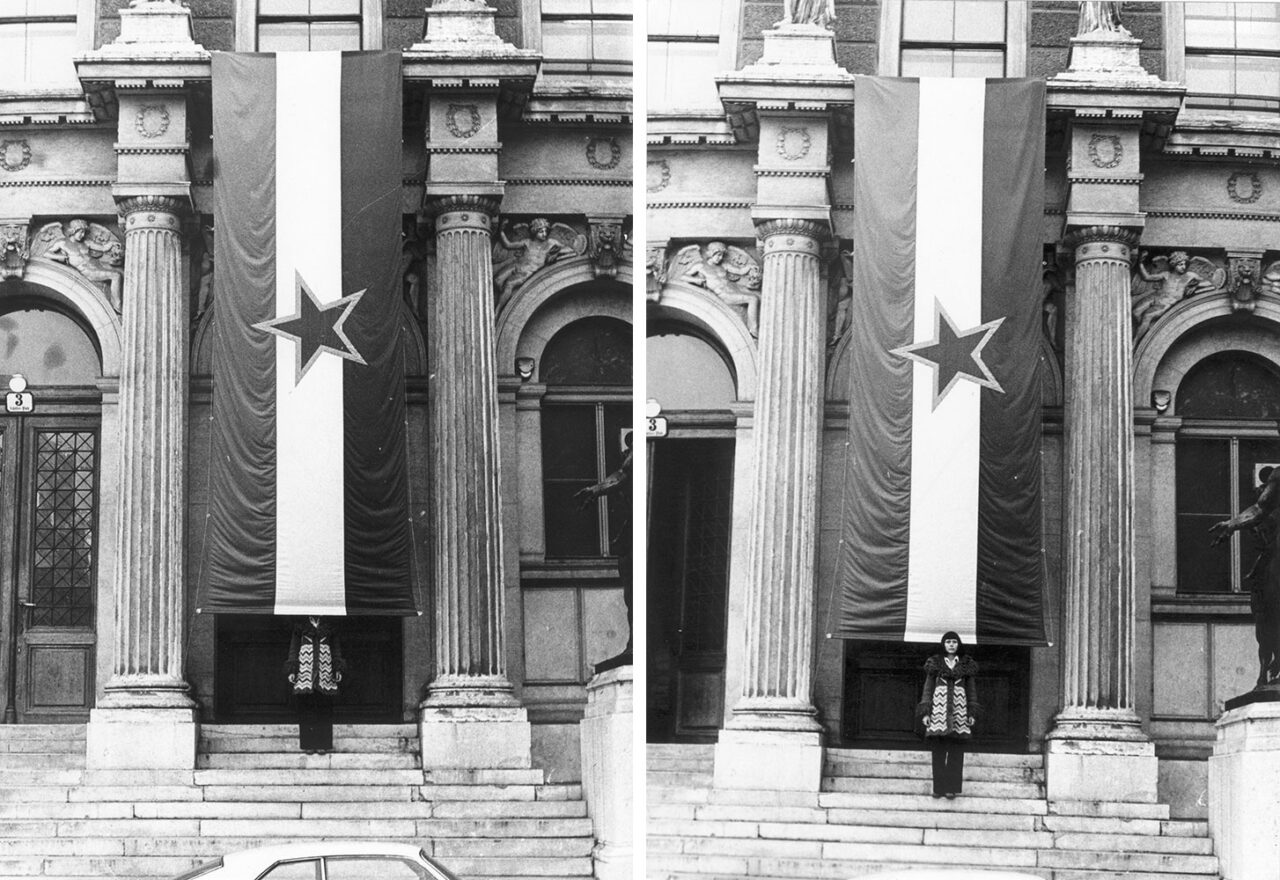
Right: Katalin Ladik, Identification , 1975 Silver gelatin print, 1 of 2 pieces, 18 x 13 cm each. IROKÉZ Collection, Szombathely. Photo courtesy Katalin Ladik and acb gallery, Budapest. © Katalin Ladik
